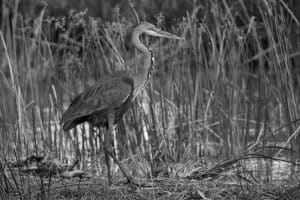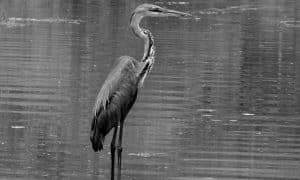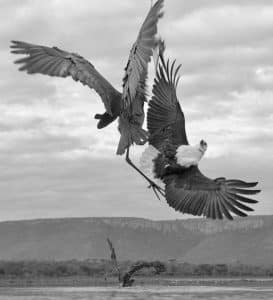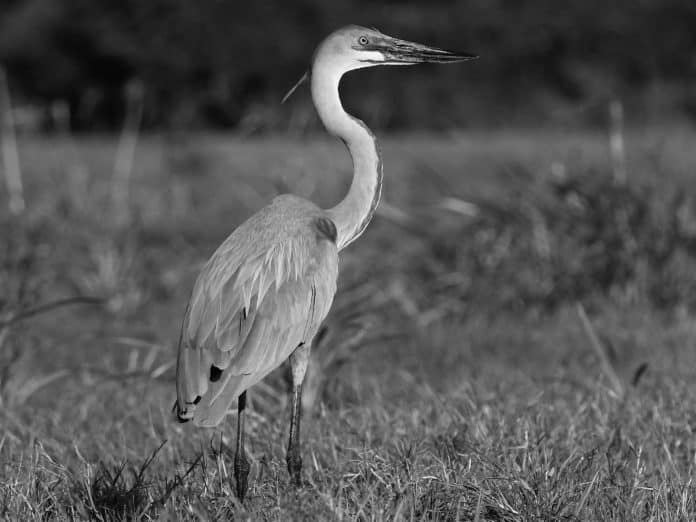Introduction to the Goliath Heron
The Goliath Heron, known scientifically as Ardea goliath, is a majestic bird that embodies the beauty and diversity of Tanzania’s avian wildlife. As the largest heron species in Africa, the Goliath Heron in Tanzania possesses an impressive stature and a commanding presence in the wetlands and waterways of Tanzania. Standing at over five feet tall with a wingspan that can reach up to seven feet, this magnificent bird is a sight to behold for wildlife enthusiasts and birdwatchers alike. The Goliath Heron is renowned for its striking appearance, with its slate-gray plumage, long legs, and dagger-like bill, making it an iconic symbol of Tanzania’s natural heritage.

The Goliath Heron’s presence in Tanzania’s ecosystem is not only a testament to the country’s rich biodiversity but also a reflection of the vital role it plays in the wetland habitats. These majestic birds are primarily found in the marshes, lakes, rivers, and coastal areas of Tanzania, where they thrive in the diverse and abundant aquatic environments. Their impressive size and distinct features make them a captivating subject for research, conservation efforts, and eco-tourism activities, contributing to the allure of Tanzania’s natural landscapes.
In this comprehensive guide, we will delve into the fascinating world of the Goliath Heron in Tanzania, exploring its habitat, behavior, conservation status, and the best ways to observe and appreciate these magnificent birds in their natural environment.
Habitat and Distribution of the Goliath Heron in Tanzania
The Goliath Heron’s habitat in Tanzania encompasses a wide range of wetland ecosystems, including freshwater and saltwater environments that provide abundant food sources and suitable nesting sites. These adaptable birds can be found in various regions across Tanzania, from the vast inland lakes such as Lake Victoria and Lake Tanganyika to the coastal wetlands along the Indian Ocean. Their distribution also extends to the riverine systems, estuaries, and mangrove swamps, where they play a crucial role in maintaining the ecological balance of these diverse habitats.
One of the key factors that contribute to the Goliath Heron’s thriving presence in Tanzania is the country’s extensive network of protected areas and national parks. These designated conservation areas, such as the Serengeti National Park, Selous Game Reserve, and Ngorongoro Conservation Area, provide essential sanctuaries for the herons and other wildlife, ensuring their continued existence in the face of environmental challenges and human activities.
The Goliath Heron’s ability to adapt to different wetland habitats reflects its resilience and flexibility in the face of changing environmental conditions. However, despite their adaptability, these magnificent birds are not immune to the threats posed by habitat loss, pollution, and human disturbance, highlighting the importance of safeguarding their critical habitats and promoting sustainable conservation measures.
Behavior and Feeding Habits of the Goliath Heron
The Goliath Heron’s behavior and feeding habits are a fascinating aspect of their natural history, showcasing their prowess as skilled hunters and adept fishers in Tanzania’s waterways. These herons are predominantly solitary birds, often seen patrolling the shallows of lakes, rivers, and marshes with a patient and deliberate demeanor as they search for their aquatic prey. Their stealthy and calculated movements, coupled with their keen eyesight, make them formidable hunters, capable of capturing a diverse array of aquatic creatures with precision and efficiency.

The Goliath Heron’s diet primarily consists of fish, which they capture using a remarkable hunting technique. With their long legs and neck extended, they stand motionless in the water, waiting for the opportune moment to strike at passing fish with their sharp bills. This methodical approach to hunting allows them to capitalize on the abundance of fish in Tanzania’s water bodies, sustaining their impressive size and energy requirements.
In addition to fish, the Goliath Heron also preys on amphibians, crustaceans, and small mammals, showcasing their adaptability and resourcefulness in utilizing the varied food sources available in their wetland habitats. Their role as top predators in these ecosystems underscores their importance in maintaining the ecological balance and biodiversity of Tanzania’s water-based environments.
Conservation Status and Threats to the Goliath Heron in Tanzania
Despite their formidable presence in Tanzania’s wetlands, the Goliath Heron faces a range of conservation challenges that threaten its long-term survival in the region. The degradation and loss of wetland habitats due to human development, agricultural expansion, and infrastructure projects pose a significant threat to the heron’s nesting and foraging grounds. The alteration of natural water systems, pollution from agricultural runoff and industrial activities, and the impacts of climate change further compound the challenges faced by these iconic birds.
In response to these threats, conservation organizations, research institutions, and governmental agencies in Tanzania have been actively engaged in initiatives aimed at protecting the Goliath Heron and its wetland habitats. Through habitat restoration projects, environmental education and awareness campaigns, and the implementation of sustainable management practices, efforts are being made to mitigate the adverse impacts on the heron and promote the coexistence of human activities and wildlife conservation.
The designation of Important Bird and Biodiversity Areas (IBAs) and Ramsar sites in Tanzania has also played a pivotal role in safeguarding the critical habitats of the Goliath Heron and other wetland-dependent species, providing a framework for conservation action and collaborative partnerships to address the challenges facing these vulnerable ecosystems. By raising awareness about the conservation status of the Goliath Heron and advocating for the protection of its habitat, stakeholders are working towards securing a sustainable future for these magnificent birds in Tanzania.
Best Places to Spot the Goliath Heron in Tanzania
Tanzania offers a host of prime locations for observing the Goliath Heron in its natural habitat, providing wildlife enthusiasts and birdwatchers with exceptional opportunities to witness these majestic birds in action. The diverse range of wetland ecosystems across the country, coupled with the presence of protected areas and conservation reserves, makes Tanzania a premier destination for experiencing the beauty and splendor of the Goliath Heron.
Some of the best places to spot the Goliath Heron in Tanzania include the Selous Game Reserve, which boasts extensive riverine and lakeside habitats teeming with birdlife, and the Ngorongoro Conservation Area, where the marshes and wetlands provide ideal foraging grounds for these iconic herons. The coastal regions of Tanzania, including the Rufiji Delta and the mangrove swamps of the Indian Ocean, also offer unique opportunities to encounter the Goliath Heron amidst the stunning coastal landscapes.
For a truly immersive wildlife experience, the Serengeti National Park and Lake Manyara National Park provide exceptional settings for observing the Goliath Heron alongside a diverse array of other avian and terrestrial species. Whether embarking on a guided safari, a birdwatching excursion, or a leisurely boat tour, visitors to these renowned natural attractions can witness the majesty of the Goliath Heron while exploring the captivating beauty of Tanzania’s wildlife-rich environments.
Tips for Observing and Photographing the Goliath Heron

When seeking to observe and photograph the Goliath Heron in Tanzania, there are several key tips and considerations that can enhance the experience and ensure the responsible and respectful interaction with these magnificent birds. Patience is paramount when observing herons in the wild, as their deliberate and cautious behavior may require extended periods of waiting for the perfect moment to witness their hunting prowess or graceful movements.
Maintaining a respectful distance from the herons and minimizing disturbances is essential for minimizing stress and ensuring the undisturbed natural behavior of these iconic birds. By exercising caution and adhering to ethical wildlife viewing practices, visitors can appreciate the beauty of the Goliath Heron while minimizing their impact on the delicate balance of the wetland ecosystems.
Photographers seeking to capture stunning images of the Goliath Heron should consider the lighting conditions, angles, and compositions that showcase the bird’s distinctive features and behaviors. The early morning and late afternoon hours often provide optimal lighting for photography, accentuating the heron’s sleek plumage and creating captivating reflections in the water. Utilizing long lenses and tripods can also aid in capturing detailed and intimate portraits of these majestic birds without encroaching on their natural environment.
By approaching the task of observing and photographing the Goliath Heron with an appreciation for their natural behaviors and the importance of ethical wildlife interaction, visitors can create memorable and impactful encounters with these iconic birds while contributing to their conservation through responsible ecotourism practices.
Ecotourism Opportunities Related to the Goliath Heron in Tanzania
The presence of the Goliath Heron in Tanzania’s wetland ecosystems has paved the way for unique ecotourism opportunities that allow visitors to engage with these magnificent birds while contributing to their conservation and the sustainable development of local communities. Guided birdwatching tours, wildlife safaris, and eco-friendly boat excursions offer immersive experiences for travelers to witness the Goliath Heron in its natural habitat, fostering a deeper connection with Tanzania’s rich avian biodiversity.
In addition to traditional wildlife viewing activities, ecotourism initiatives centered around the Goliath Heron provide educational and interpretive opportunities for visitors to learn about the ecological significance of wetland habitats and the conservation challenges facing these critical ecosystems. By engaging with local guides, naturalists, and conservation experts, travelers can gain valuable insights into the intricate relationships between the Goliath Heron, other wildlife species, and the broader conservation efforts in Tanzania.
Furthermore, ecotourism ventures that support community-based initiatives and sustainable livelihoods offer a holistic approach to promoting the conservation of the Goliath Heron and its wetland habitats. By patronizing eco-lodges, local artisan markets, and cultural experiences that celebrate the natural heritage of Tanzania, visitors can contribute to the preservation of these unique environments while fostering positive impacts on the local communities that coexist with the Goliath Heron and other wildlife.
Through responsible and purposeful ecotourism, travelers can forge meaningful connections with the Goliath Heron and its wetland habitats, leaving a positive imprint on Tanzania’s natural landscapes while supporting the ongoing efforts to conserve these iconic birds for future generations.
Local Efforts for Goliath Heron Conservation
Local communities and grassroots organizations in Tanzania play a crucial role in the conservation of the Goliath Heron and the preservation of its wetland habitats, contributing to a collective and collaborative approach to safeguarding these iconic birds. Through community-based conservation initiatives, environmental stewardship, and sustainable resource management, local efforts are instrumental in promoting the coexistence of human activities and wildlife conservation, benefiting both the Goliath Heron and the communities that share their landscapes.
By engaging in habitat restoration projects, environmental education programs, and participatory monitoring of wetland ecosystems, local stakeholders are actively involved in the protection and conservation of the Goliath Heron’s natural environment. These efforts not only contribute to the long-term sustainability of the heron populations but also foster a sense of ownership and pride among the communities that are custodians of these vital habitats.
Collaborative partnerships between local organizations, governmental agencies, and conservation groups further strengthen the conservation landscape for the Goliath Heron, enabling the sharing of knowledge, resources, and best practices to address the multifaceted challenges facing these wetland-dependent birds. By empowering local communities to become advocates for wildlife conservation and environmental stewardship, these initiatives create a ripple effect of positive change that reverberates across Tanzania’s diverse landscapes.
The involvement of local communities in the conservation of the Goliath Heron also extends to the promotion of sustainable livelihoods and economic opportunities that align with the principles of environmental sustainability and wildlife protection. Through ecotourism ventures, sustainable fisheries, and the development of nature-based enterprises, communities can derive tangible benefits from the conservation of the Goliath Heron, fostering a harmonious coexistence that ensures the continued thriving of these magnificent birds and their habitats.
Conclusion and Future Outlook for the Goliath Heron in Tanzania
In conclusion, the Goliath Heron stands as a captivating emblem of Tanzania’s rich avian diversity and the intricate web of life that thrives in the country’s wetland ecosystems. As Africa’s largest heron, these majestic birds command attention and admiration, drawing visitors and wildlife enthusiasts to witness their grace and grandeur in the natural landscapes of Tanzania. However, the future outlook for the Goliath Heron hinges on the collective efforts of conservation organizations, governmental agencies, local communities, and responsible travelers to safeguard their habitats and promote their coexistence with human activities.
With the continued commitment to habitat protection, sustainable conservation measures, and the promotion of ecotourism initiatives, Tanzania has the opportunity to secure a promising future for the Goliath Heron and ensure the perpetuation of its legacy as a symbol of the country’s natural heritage. By fostering a deeper appreciation for the ecological significance of these iconic birds and championing their conservation, Tanzania can uphold its status as a sanctuary for wildlife and a beacon of hope for the Goliath Heron’s enduring presence in the country’s waters.
As visitors and advocates for wildlife conservation, each individual has the power to contribute to the preservation of the Goliath Heron and its wetland habitats, leaving a lasting impact on Tanzania’s natural landscapes and the magnificent birds that call them home. Through collective action and a shared commitment to conservation, the Goliath Heron can continue to soar across Tanzania’s waters, inspiring awe and admiration for generations to come.

































